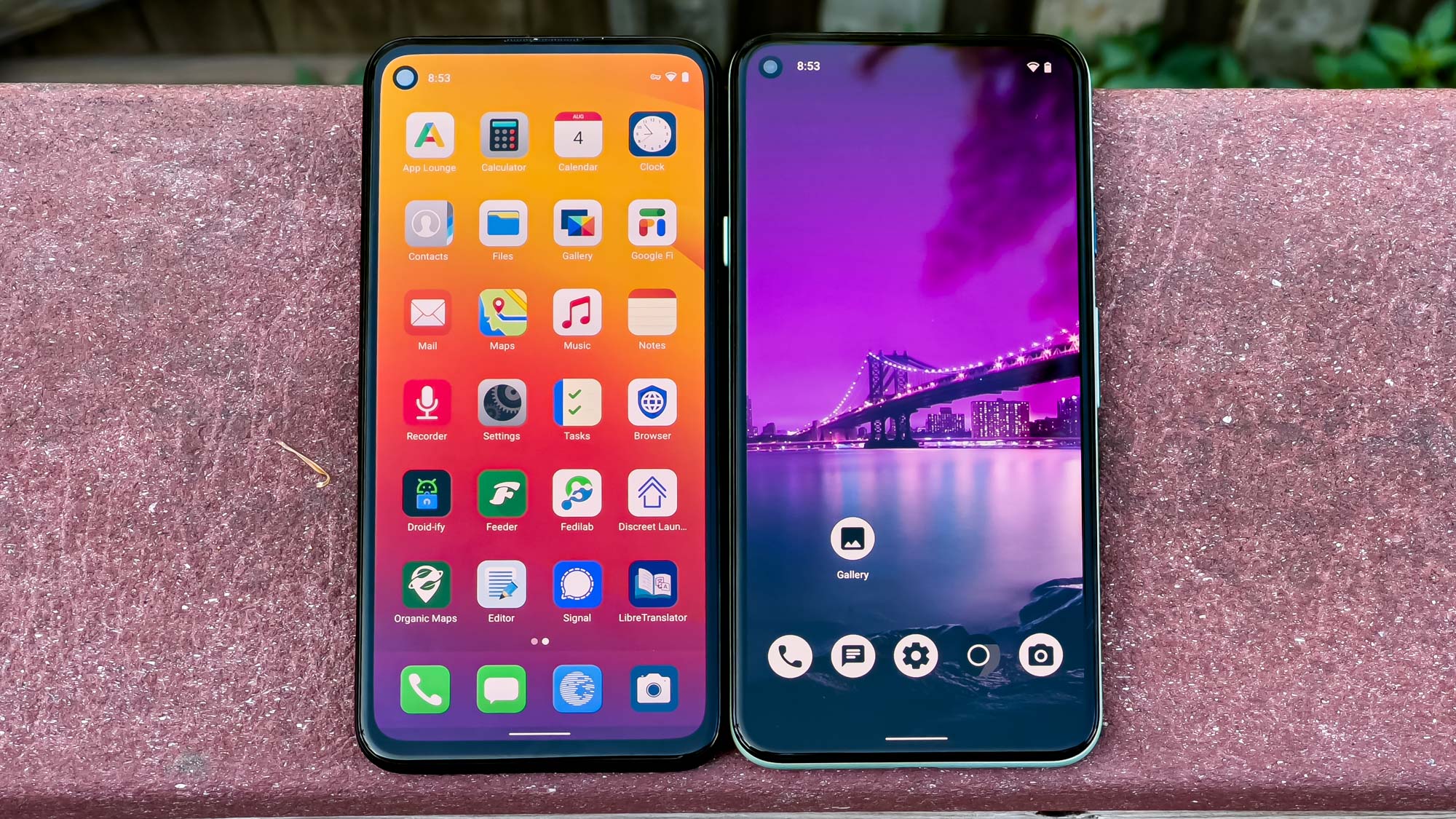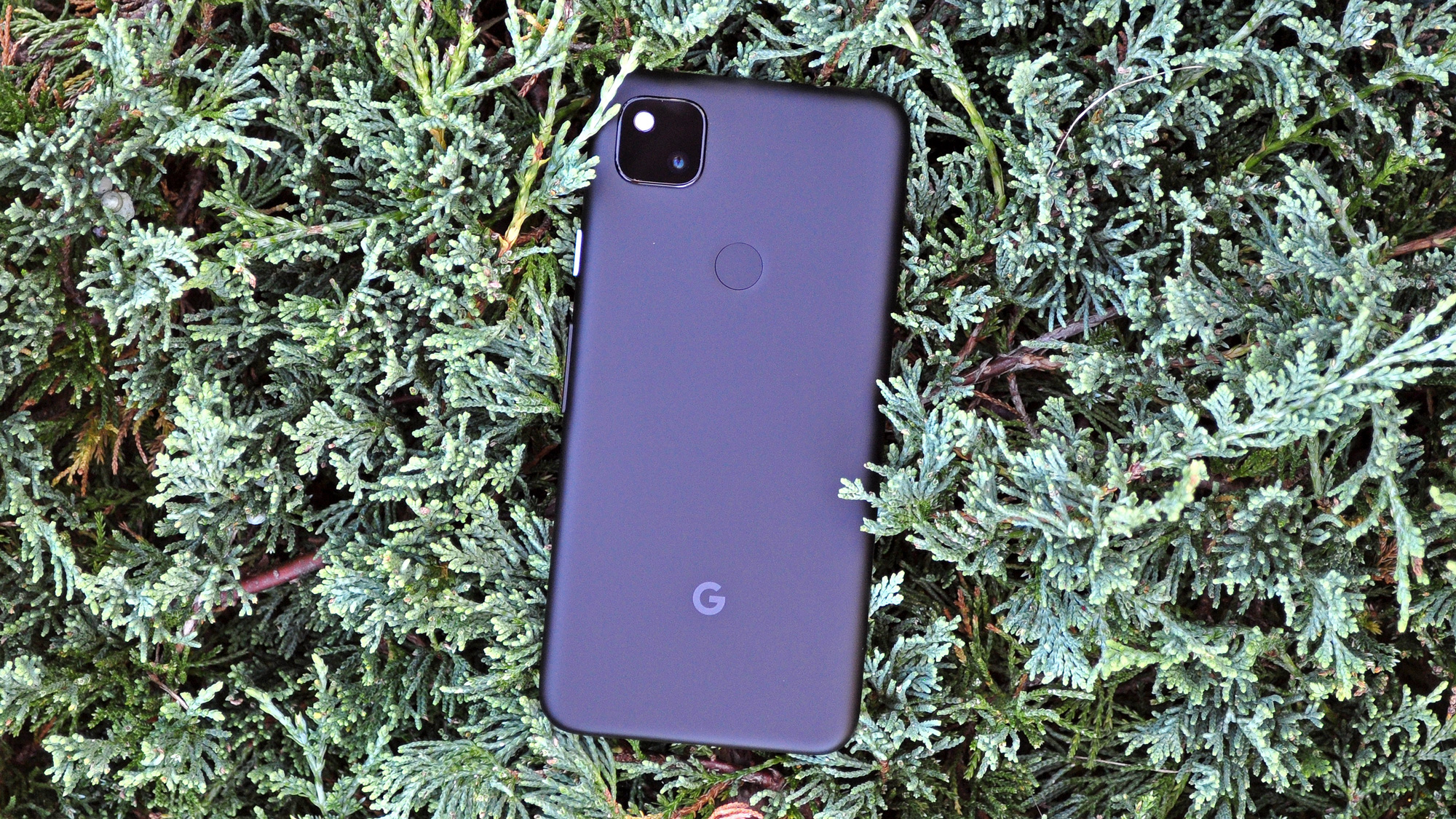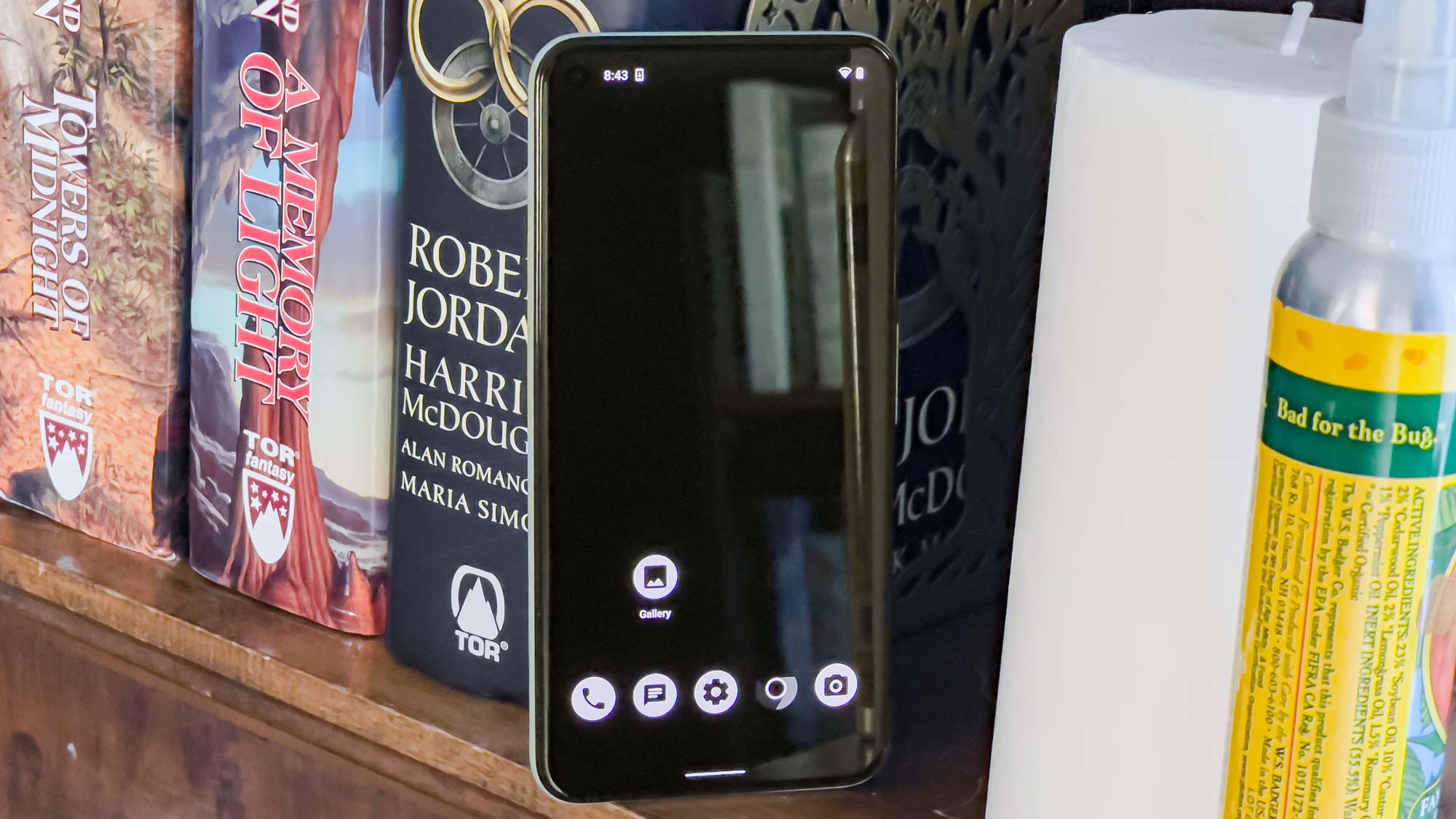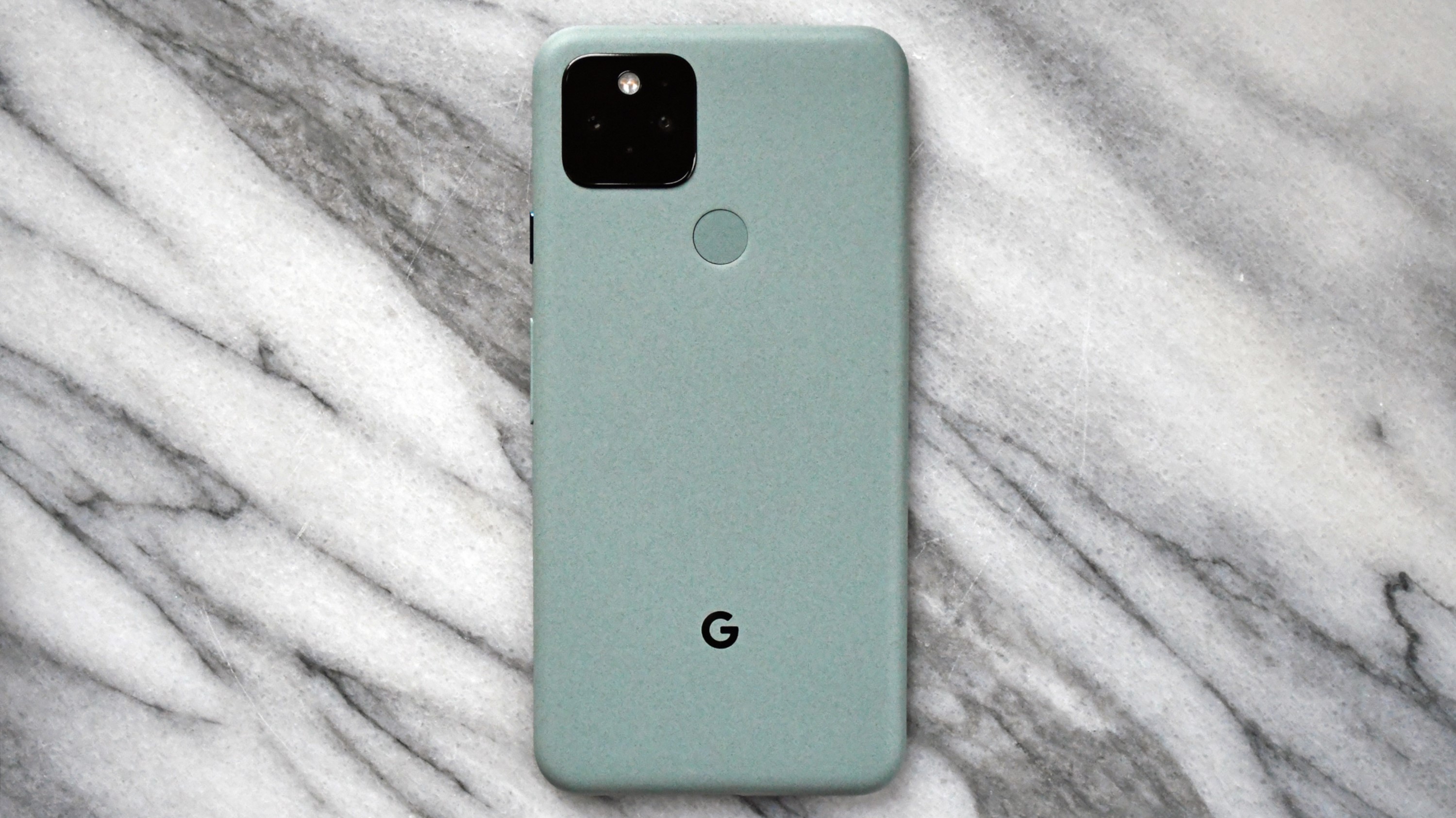I tried completely de-Googled Android — here's what happened
Between /e/OS and GrapheneOS, you have options

Last year, I ran an experiment where I used de-Googled Android for three weeks to see how I'd manage. That test went rather well, where most of my frustrations came down to the hardware I used — the OnePlus 6 had not aged well.
But now, the ROM I tested, /e/OS, hit version 1 and the developers promised a lot of fixes and upgrades. So I put on my custom ROMing gloves and dove in. Along the way, I discovered another de-Googled ROM, though one focused on the utmost hardened security called GrapheneOS.
A few days later and I have a Pixel 5 on GrapheneOS and a Pixel 4a on /e/OS. Both try to do similar things, but offer vastly different experiences. While I don't think I'll do another three-week daily driver experiment this time around, I do have several thoughts after using both ROMs for the better part of a fortnight.
Neither was as easy to install as I thought at the outset, so this project isn't for the faint of heart. And like I said last year when I tried out /e/OS, this de-Googled Android life is not for everyone, or even for most people. But it's incredibly fun and I had a blast... once I got through the installation horrors and annoyances.
This isn't a review of GrapheneOS and /e/OS, but rather my experiences with them thus far. Who knows, I might decide to give one a full try.
What does "de-Googled Android" mean?
A great question, glad I asked. De-Googled Android basically means that the OS is just the raw elements of Android itself without any of the Google flavorings thrown in. That means no Play Store, no Play Services, and no Pixel-specific features. It's actually the purest form of Android.
De-Googled Android is the raw OS without any of Google's additional influence.
But the Android Open Source Project (AOSP) still has lingering Google effects in it, as you might expect for an operating system built by the search giant. That's where something like /e/OS comes in, which has totally stripped anything Google-related in the underlying software. That means tings like different Network Time Protocol and DNS servers. It also means an alternative location service, such as Mozilla's.
Get instant access to breaking news, the hottest reviews, great deals and helpful tips.
In GrapheneOS' case, the ROM is also built upon AOSP, but heavily hardened for security and privacy, even down to a custom version of Chromium. It doesn't include Google apps or services out of the box, though I couldn't find if the developers go to /e/OS' lengths to strip Google's influence from the OS.
These are the two I opted for, but I should offer an honorable mention to CalyxOS. GrapheneOS and /e/OS were the two I'd heard the most about in my search for de-Googled Android, which is why I chose them for this purpose.
Revisiting /e/OS
When I heard that /e/OS hit version 1, I decided I wanted to try it again. But the OnePlus 6 I had tested it on before had turned into a different project, one which I will also write about in the near future. So I picked up a Zenfone 8 (one of the most powerful supported devices) and tried to get /e/OS installed.

Things did not go well. I managed to get the Zenfone 8's bootloader unlocked easily enough, but when I flashed the e recovery, that's when things went downhill. The fastboot command to flash the recovery image doesn't always flash it to both slots a and b, requiring you to manually specify the slot that didn't get flashed. The Zenfone 8's documentation specifies this in a note, but the other devices I tested this one (Pixel 5 and Pixel 4a) did not have this warning.
I don't want to be mean, but I also can't sugarcoat it: the documentation and recovery aren't good experiences.
In fact, that's how I nearly bricked the Pixel 5. The whole thing got corrupted and stuck in a bootloop, but I was able to rescue it after some major effort.
The e recovery itself isn't all that great, either. You're supposed to perform a factory reset to prepare the system for /e/OS. Thing is, the e recovery images I used on both the Zenfone 8 and Pixel 4a apparently didn't do a good enough job. The Zenfone 8 would boot into a black screen with white bars and the Pixel 4a would get stuck on its boot animation.
To get around the Pixel 4a's problem, I had to reboot into the bootloader and manually factory reset, then reinstall /e/OS as instructed. Then, the Pixel 4a booted. I don't want to be mean, but I also can't sugarcoat it: the documentation and recovery aren't good experiences, even for someone experienced with custom ROMs.
There's an Easy Installer for a small list of supported devices, the Pixel 4a included. I tried to go that route, but I couldn't get the program to launch on my Fedora machine and the software got hung up after downloading the ROM on my Manjaro PC. I suspected a checksum mismatch based on the logs I looked through. I never tried Windows.

But once I got the Pixel 4a up and running, the experience smoothed out. The e Foundation didn't really highlight too much about /e/OS v1, but I noticed right off the bat how much better the experience was. Slicker animations, less hangups (even on the 4a with its lower-tier specs), and a lot more polish.
The highlight is the new App Lounge, the place where you install applications. Not only does it mirror many of the apps in the Play Store, but it lets you install Progressive Web Applications (PWAs) and open-source apps like you might find on F-Droid.
Devices in the stable branch now pass SafetyNet, opening up more apps for use. The Mail, Messages, and Camera apps got visual refreshes, making them look more modern. The privacy focus continues with /e/OS letting you control what information apps receive, such as trackers, IP address, and location.
Overall, I think I could live with /e/OS on a daily basis with some adapting on my part. Much easier than last time.
But the strong iOS influence remains. It makes sense to go with Apple-like design to show that you're the antithesis to Google, but I had hoped for more originality with v1. You can, of course, install alternative launchers to make the home screen feel more like Android. And like before, once you pull down the notification shade, it feels just like you'd expect Android 11 to.
Ah, but that might give you pause. It certainly did for me. This version of /e/OS is based on Android 11, which is now two years old. (We're so close to Android 13's launch.) The team behind /e/OS is likely small and de-Googling Android completely and building the /e/OS ecosystem — one meant to provide a viable alternative to regular Android — takes a lot of work.
As for using /e/OS, I think it's a fine experience. A lot of what I liked before is still here, and the e Foundation has addressed some of what I didn't, such as memory management concerns. /e/OS has gotten two point releases since v1's launch which have fixed a lot of bugs and other issues.

As before, you don't have access to every app in the Play Store. You won't get to any premium apps or be able to manage your subscriptions. Previous purchases are mostly inaccessible, though I didn't have trouble with my stuff in Call of Duty: Mobile. (Whether or not the game was playable on the Pixel 4a is another story altogether, but I digress.)
The Camera app is serviceable, though I've since lost the Pixel 4a's camera magic. Photos come out fine enough, but the richness of Google's computational photography prowess is noticeably absent. Such is one of the trade-offs to running a custom ROM.
The system apps all seem to work OK, even on the Pixel 4a's hardware. The built-in Maps uses OpenStreetMaps, which is basically the Wikipedia of maps and navigation — it's a reasonably viable alternative to Google and Apple Maps in my testing. Other apps like the Gallery and Browser seem to work pretty well, too. But the Google Fi app is preinstalled for some reason, which baffles me.
Overall, I think I could live with /e/OS on a daily basis with some adapting on my part, minus getting used to the Pixel 4a after using an iPhone 13 Pro Max. If I can get the ROM installed properly on the Zenfone 8 I have in my office, I might just give /e/OS another shot as my daily driver as a follow-up to this experiment.
Checking out GrapheneOS
Now GrapheneOS is interesting. It's based on AOSP, not LineageOS like /e/OS technically is. The developers for Graphene have gone to ridiculous lengths to harden the system against security threats. I'll be honest, some of the stuff goes over my head. It only works on Pixels, so I pulled out the Pixel 5 I rescued from the /e/OS installation fiasco and tried it out.

GrapheneOS offers a webUSB installer that ought to handle the process for you. Thing is, I couldn't get it to work on my Fedora system, so I went through the process manually in the command line. It's really not all that bad. Once I flashed everything, I booted the Pixel 5 into GrapheneOS.
Immediately, the dark monochrome vibe oozes "mature" and "secure." App icons are black on white backgrounds, the default wallpaper is just black, and the whole OS tries to show you that it is, in fact, minimal. I like it.

For this part of the experiment, I vowed to use open source apps only. GrapheneOS lets you install the Play Store in a sandbox, which is a nifty idea. However, I forwent that option and installed F-Droid, the place to get open source Android apps.
There's not a lot to say about GrapheneOS. It's barebones and simple. No frills.
There's not a ton to say about GrapheneOS. It's barebones and simple, and the stock apps seem pretty good for the most part. The Vanadium browser (a hardened version of Chromium) is quick to load pages and switch between tabs. The Camera app, like /e/OS, is serviceable, though picture quality on the Pixel 5 is sorely diminished over stock. I fully expected that. The Messaging app looks ripped straight out 2013, but I switched to a different one from F-Droid called QKSMS.
GrapheneOS is the easiest to adapt to because it feels a lot like a Pixel. Sure, it's very minimal on features, but it's meant to provide a solid and secure Google-less experience. I did not try the Play Services sandbox because I wanted to keep this part of the experiment totally Google-free and open source. So far, that has gone extremely well. Perhaps too well.
My de-Googled Android preference and outlook
So of these two, which do I prefer? Which one would I use on a daily basis if I could, hardware aside? Looking back at the last two weeks, that answer seems pretty simple to me: GrapheneOS. It's a simple and powerful version of Android with no frills.

Does GrapheneOS go to the lengths that /e/OS does to de-Google Android? I don't know for sure. However, I think Graphene works well with its minimalism. You can install whatever you want to, but you can get by with the bare minimum. Graphene also seems to take security more seriously than /e/OS. That is not, however, to say that /e/ doesn't focus on security, but it seems to be less of a focus than with Graphene.
One advantage /e/OS has over GrapheneOS is that it is available on a lot more devices, more than just Pixels. Some of those are officially supported by the /e/OS team, while others are community-driven. That's pretty cool. However, a lot of them are old. Like I said earlier, I'm pretty sure the Zenfone 8 from 2021 is the most powerful one on the list.
If I had to switch to one of these as my daily driver (using the Pixel 5 as the test device), I think GrapheneOS would do the trick. In fact, its minimalism is so strong that, in tandem with me using apps from F-Droid only, it encourages me to use the phone less. It's a powerful effect and one that I could easily see myself enjoying since I am on my phone entirely too much.
If you have a spare Pixel, then you might want to check out GrapheneOS. Be ready to customize it to your liking, but that's part of the fun of custom ROMs. I really do like /e/OS, but it feels busy and like it's trying to do too much. I want simplicity and minimalism, and GrapheneOS offers me just that. Maybe I will try out a daily driver experiment with this ROM.

Jordan is the Phones Editor for Tom's Guide, covering all things phone-related. He's written about phones for over six years and plans to continue for a long while to come. He loves nothing more than relaxing in his home with a book, game, or his latest personal writing project. Jordan likes finding new things to dive into, from books and games to new mechanical keyboard switches and fun keycap sets. Outside of work, you can find him poring over open-source software and his studies.
